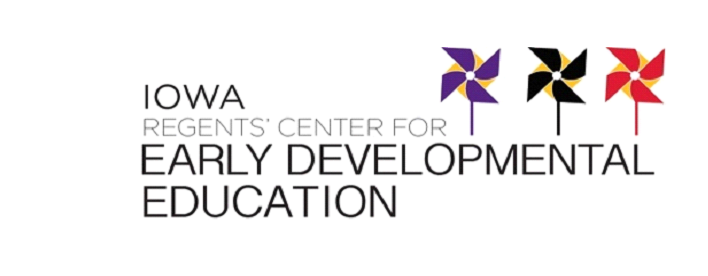Letter sounds are emphasized connected to first names.
NAEYC
Curriculum Content Areas for Cognitive Development: Early Literacy Development
2.E.03- In Ms. Hansen's classroom children have opportunities to become familiar with print. They are actively involved in making sense of print, and they have opportunities to become familiar with, recognize, and use print that is accessible throughout the classroom:...print is used to describe some rules and routines...and Ms. Hansen...helps children recognize print and connect it to spoken words.
Ms. Hansen shows name cards to her class to identify the classroom helpers for the day. All of the children have the opportunity to say the name shown on the card. Once a child identifies his or her name, Ms. Hansen asks them to say the first letter in his or her name.
Curriculum Content Areas for Cognitive Development: Social Studies
2.L.02-Children are offered opportunities to become part of the classroom community so that each child feels accepted and gains a sense of belonging.
Each day in Ms. Hansen's class there are different classroom helpers. The children help with parts of the daily routine in the classroom. When individuals share in the responsibilities of a community, they gain a sense of pride in the community. This leads to a feeling of acceptance and belonging as a valued member of a community.
IELS
9.5-Awareness of Community
Children have an increasing awareness of belonging to a family, community, culture, and program.
Children in Ms. Hansen's class show responsibility as a member of a community.
Ms. Hansen reviews the list of classroom helpers with her class. Children have different responsibilities in the classroom such as "people counter" and "substitute helper." This gives children a sense of responsibility to the classroom community and to each other.
10.2-Early Literacy
Children engage in early reading experiences.
The children in Ms. Hansen's class identify some alphabet letters by their shapes, especially those in his/her own name.
Ms. Hansen shares with her class who the helpers are for the day. She holds up a name card for the children to recognize and then she points to the first letter in the child's name and asks the child to identify the first letter. When the child answers, Ms. Hansen reinforces the sound that the letter makes ("Dawson, do you know what this letter is? That's right. It's a 'D' and it says 'duh, duh, duh'").
IQPPS
Curriculum Content Areas for Cognitive Development: Early Literacy Development
2.19- In Ms. Hansen's classroom children have opportunities to become familiar with print. They are actively involved in making sense of print, and they have opportunities to become familiar with, recognize, and use print that is accessible throughout the classroom:...print is used to describe some rules and routines...and Ms. Hansen...helps children recognize print and connect it to spoken words.
Ms. Hansen shows name cards to her class to identify the classroom helpers for the day. All of the children have the opportunity to say the name shown on the card. Once a child identifies his or her name, Ms. Hansen asks them to say the first letter in his or her name.
Curriculum Content Areas for Cognitive Development: Social Studies
2.37-Children are offered opportunities to become part of the classroom community so that each child feels accepted and gains a sense of belonging.
Each day in Ms. Hansen's class there are different classroom helpers. The children help with parts of the daily routine in the classroom. When individuals share in the responsibilities of a community, they gain a sense of pride in the community. This leads to a feeling of acceptance and belonging as a valued member of a community.
HSPS
1304.21(a)(1)(iv) - Ms. Hansen provides a balanced daily program of child-initiated and adult-directed activities… through this letter recognition activity.
Ms. Hansen structures her daily schedule to allow for children to choose activities as well as experience activities planned and led by adults in the room. In this example, the children are engaged in a teacher-led morning group time which is part of their daily routine.
1304.21(a)(4)(iv) – Ms. Hansen supports literacy…development through materials and activities according the developmental level of each child.
Ms. Hansen shows name cards to her class to identify the classroom helpers for the day. All of the children have the opportunity to say the name shown on the card. Once a child identifies his or her name, Ms. Hansen asks them to say the first letter in his or her name.
HSCOF
Language Development
Speaking and Communicating
- Develops increasing abilities to understand and use language to communicate information, experiences, ideas, feelings, opinions, needs, questions, and for other varied purposes
Literacy
Phonological Awareness
- Shows increasing ability to discriminate and identify sounds in spoken language.
Print Awareness and Concepts
- Shows increasing awareness of print in classroom, home and community settings.
- Develops growing understanding of the different functions of forms of print such as signs, letters, newspapers, lists, messages, and memos
- Demonstrates increasing awareness of concepts of print, such as that reading in English moves from top to bottom and from left to right, that speech can be written down, and that print conveys a message.
- Shows progress in recognizing the association between spoken and written words by following print as it is read aloud.
Alphabet Knowledge
- Shows progress in associating the names of letters with their shapes and sounds.
- Increases in ability to notice the beginning letters in familiar words.
- Knows that letters of the alphabet are a special category of visual graphics that can be individually named.
Social and Emotional Development
Self Control
- Develops growing understanding of how their actions affect others and begins to accept the consequences of their actions.
- Demonstrates increasing capacity to follow rules and routines and use materials purposefully, safely, and respectfully.
Cooperation
- Increases abilities to sustain interactions with peers by helping, sharing and discussion.
Knowledge of Families and Communities
- Develops growing awareness of jobs and what is required to perform them

